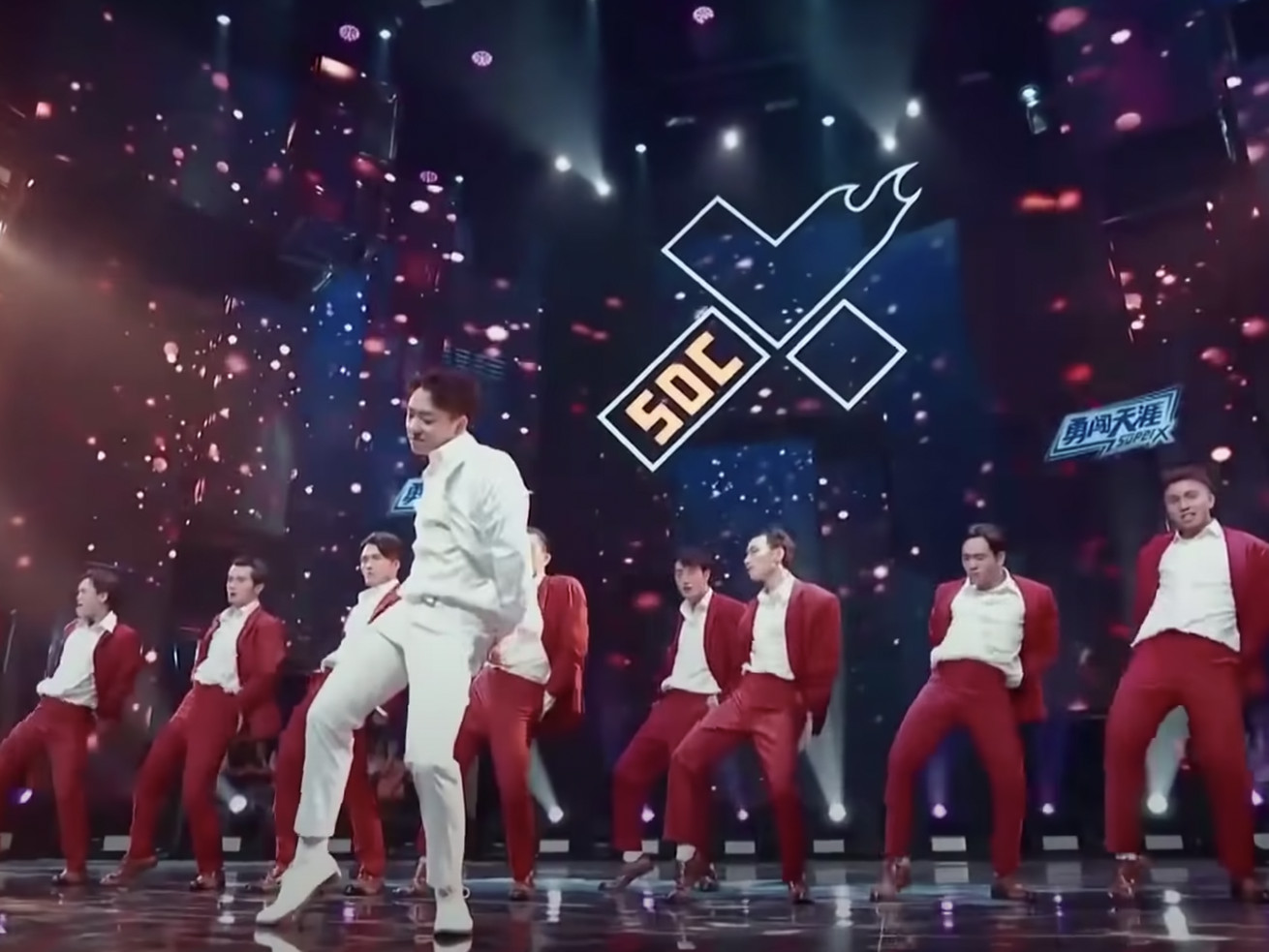Street Dance of China makes a compelling argument that what the world needs now is a giant global dance-off.
The best thing about falling down rabbit holes is that you never know where they’ll lead. Eighteen months ago, I had no idea I’d spend most of the pandemic falling in love with a Chinese show about street dancing — and that it would shift my worldview in the process.
But that’s before I discovered Street Dance of China, a reality competition show where high-level dancers from all across China, and this season from all around the world, join teams and compete for the title of China’s best street dancer. It’s subtitled, and it runs long: Each season’s 12 episodes usually range from 90 to 120 minutes apiece, with last year’s finale broadcast live in a six-hour marathon. And its format is initially a bit confusing to anyone unfamiliar with typical street dance competitions. But despite these hurdles, I watched all 12 episodes of the show’s third season as they aired last year, then rewatched them again and again.
I began watching SDC because the third season featured Wang Yibo, a multi-talented actor/dancer/idol I’ve followed since first watching his fantasy drama series The Untamed a year and a half ago. As it turned out, Yibo was a brilliant gateway drug to a whole new obsession. SDC not only gave me new appreciation for street dance as a culture and as an art form, but also introduced me to a whole new way of thinking about China.
Like many white Americans, my main view of Chinese culture has historically been filtered through the framework of often-sinophobic US media, the occasional martial arts or arthouse film notwithstanding. Until I watched this show where Chinese pop culture put itself on elaborate display, I hadn’t fully realized how skewed the typical US media portrayal of China can be — especially the false idea that China is primarily isolationist, and that Chinese pop culture is disinterested in actively engaging with the rest of the world.
To some extent, I owed that impression to the Chinese Communist Party, which has a habit of cracking down on external cultural influences if it feels they’re growing too pernicious. In recent years, for example, chilly receptions have greeted Korean pop culture, basketball, and hip-hop. In fact, a hip-hop media ban in China, which went into effect in 2018 after a controversial series of incidents involving high-profile Chinese rappers, inadvertently spawned Street Dance of China. With other forms of hip-hop culture banned, dancing was the only way for TV networks to satisfy their audiences’ growing interest in hip-hop. Street dance culture has been growing in China, so there’s a thriving competition scene and an incredible pool of talent to draw from.
As such, SDC, which launched in 2018, offers a highly popular, highly positive alternative view of hip-hop: one that emphasizes its dancers’ artistry, sense of community, and multiculturalism. Thanks to its vibrance and sense of community, as well as the sheer joy of many of its dance routines, SDC was an ideal form of pandemic escapism.
The show, like the umbrella of street dance itself, brings together a broad range of modern dance styles, from jazz and hip-hop to breaking, locking, and waacking. The format balances choreographed routines with spontaneous freestyle battles. The performances often fuse traditional narrative storytelling with fun, cross-genre experimentation, combining a love of Chinese culture with a broad multicultural mindset in the dance styles and song choices. Season three saw everything from homages to Chinese folklore and Bruce Lee to homages to Charlie Chaplin, Jim Carey, Sailor Moon, and tomb raiders.
Dancers compete for places on four teams, each helmed by a celebrity captain, most of whom so far have been former K-pop idols with considerable dance experience. Season three featured Exo’s Zhang Yixing (Lay), Got7’s Jackson Wang, actor Wallace Chung, and Yibo, each competing against each other, often hilariously, to build their own teams and spare their dancers from weekly elimination. Their combined popularity drove the show to a massive ratings increase (the show announced in its season three finale that its ratings had nearly doubled over the season and that its revenue had increased by 65 percent), along with a considerable international fandom.
As a part of that fandom, I came for the captains, but I stayed for the dancers, who by the finale had begun to seem less like competitors and more like an extended family (to them and to me). Fortunately for fans of last season, many of the competing dancers have returned for season four, which has expanded focus from merely pitting dancers against each other to bringing street dancers from around the world to join the competition, turning the show into a truly global event.
If that sounds like a surprising direction for a Chinese reality show to take, it’s nothing compared to the quiet surprises every episode of SDC has held for me. Each week, the show welcomes dancers of color like Bouboo, a French immigrant who has become one of the show’s most popular stars; Chinese ethnic minorities such as Yi and Wa dancers; one fantastic deaf dancer; and dancers who are openly queer, although their sexuality is never acknowledged on the show.
Even the age range of the dancers is diverse, with the season three finale seeing some of the show’s oldest competitors squaring off against some of the youngest. That’s not to say that there’s nothing problematic about this aggressively rosy depiction of Chinese culture as welcoming and inclusive. It is a deliberately selective view of a nation whose government’s human rights abuses are well known and well publicized.
But SDC’s politics are mostly self-contained — a reminder that the CCP, after all, is not synonymous with China itself, and that China itself is not a monolith. The present tensions between our respective governments have arguably made it harder for Americans to recognize and respect Chinese culture as complex, nuanced, and containing multitudes. Meanwhile, each week, SDC resists the US’s dominant narrative of China as static and hostile, simply by bringing together a lot of highly talented people who love dancing.
If you want to watch SDC, I recommend starting with season three, since it’s the most easily accessible and introduces you to most of the dancers who return in season four. Thanks to a team of dedicated fansubbers, full translated episodes are available to watch for free. The fansubs are generally superior to the officially released subtitles — but the show’s network, Youku, has also made the entire third season available on YouTube with English subtitles.
Season four began airing in August, with Yixing and Yibo returning as team captains alongside Han Geng and his former Super Junior bandmate, Canadian prodigy Henry Lau. Because of its international focus, the season is more diverse than ever, with well-known dancers hailing from regions around the globe. Youku simulcasts episodes on YouTube, with English subs on the day of release. The new season, so far, has held lots of format changes and plenty of surprises.
Even so, it still feels like the family reunion I didn’t know I needed. It’s a welcome reminder that even in the midst of an isolating pandemic, in many ways, the world is smaller than ever.
Street Dance of China is streaming on YouTube.
For more recommendations from the world of culture, check out the One Good Thing archives.
Author: Aja Romano
Read More



